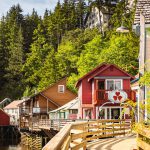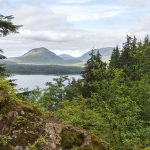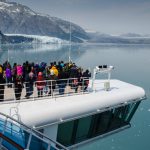Skagway is a very small town, located at the upper end of Alaska’s Inside Passage. It has less than 1,000 full-time residents, yet it plays host to thousands of cruise passengers all through the summer season. For this reason, its population more than doubles during summer, as many young university students come for work and also a bit of wilderness adventure.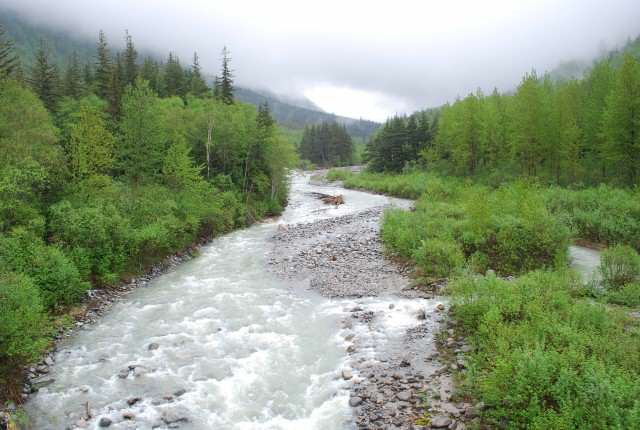 When your ship docks at the edge of the Main Street, you will be charmed by the late 19th century Victorian architecture. There are dozens of buildings that are now part of the National Registry of Historic Places. Skagway promotes the aura of its gold rush era heritage when it was the starting point for the arduous journey over the White Pass to the gold fields of the Klondike.
When your ship docks at the edge of the Main Street, you will be charmed by the late 19th century Victorian architecture. There are dozens of buildings that are now part of the National Registry of Historic Places. Skagway promotes the aura of its gold rush era heritage when it was the starting point for the arduous journey over the White Pass to the gold fields of the Klondike.
But despite feeling enticed to linger, the real treasure of your visit is the narrow gauge White Pass and Yukon Railroad journey that awaits at the station. The White Pass and Yukon Railroad is the cornerstone of Skagway’s tourism, and with nearly a million summer visitors, the train ride is greatly anticipated.
But a bit of historic background makes the journey so much more meaningful:
- What brought settlers was the discovery of White Pass, the only significant route of access through the rugged, steep and glacier filled Coast Mountains.
- William Moore, who helped survey the boundary with Canada in 1887, believed that these mountains and the lands beyond contained gold bearing strata. He staked a claim and built a cabin so he and his son could prospect the surrounding region.
- Up until the survey of 1887, the border between the two countries was ill defined because the earlier Russian and British governments had never agreed upon a demarcation of their respective territory.
- Although Moore did not find gold in the immediate area, it was discovered in large quantity in the Klondike along the Yukon River to the north, and Skagway would become the port of embarkation for the perilous land journey through the mountains to the goldfields.
- Eager prospectors arrived in great numbers, ultimate swelling Skagway into a major town of tens of thousands. Those not prepared for the arduous journey into the Yukon found that there was money to be made in opening shops to supply the would be prospectors with needed supplies.
- The Canadian authorities set up strict rules as to the amount and type of supplies people had to carry over the pass to be allowed to cross the border. And Skagway merchants became prosperous.
- By 1900, Skagway was a boom town, but one with a wild and unsavory flavor. For the first few years of its existence it was rife with thieves, card sharks, gunslingers and unscrupulous businessmen that preyed upon would be miners and town folk alike.
- From over the border it was then possible to travel by barge or small boat down the Yukon River to Dawson City, which became the hub of the goldfield region known as the Klondike.
- During winter the snow made travel exceptionally difficult, but then during summer the soggy ground and mosquitos made the journey equally as uncomfortable.
- With the strict Canadian rule requiring prospectors to carry heavy loads of supplies, there was need for a railroad, and construction began in 1898, utilizing narrow gauge tracks for steep mountain terrain.
- Unfortunately the gold fever of the Klondike began to wane at the time the railroad was completed in 1900. But the commercial mining of copper, lead-zinc and silver along with routine passenger traffic kept the railroad in business.
- The World War II construction of the Alcan Highway saved the railroad from collapse. It was the U. S. Army that actually ran the railroad so as to maximize its use for wartime purposes. This required the Canadian Parliament to authorize a foreign military unit to operate within its territory.
- After World War II, the railroad continued operation, switching over to diesel locomotives in the late 1950’s, and hauling specialized smaller size containers for freight at the same time. The White Pass and Yukon ultimately became the continent’s only narrow gauge line to continue operating as a working railroad when others either were abandoned or became tourist oriented.
- Being heavily dependent upon hauling ore as its major cargo left the railroad vulnerable and in 1982, a severe drop in lead-zinc prices spelled disaster. The mine shut down and the bulk of the rail traffic ceased. Much of the rolling stock and many of the diesel locomotives were sold and the line ceased to operate.
- What is ironic is that this happened just when cruise passenger traffic on the Inside Passage was starting to develop into a major potential. Like the Durango Silverton Railroad in Colorado, the White Pass and Yukon also became tourist oriented.
- The cruise lines pressured for the creation of a scenic and historic service, guaranteeing great numbers of passengers given the love people have for unique railway journeys that can be made in a few hours. It did not take long to have the line up and running in 1988 and today it is the life-blood of Skagway
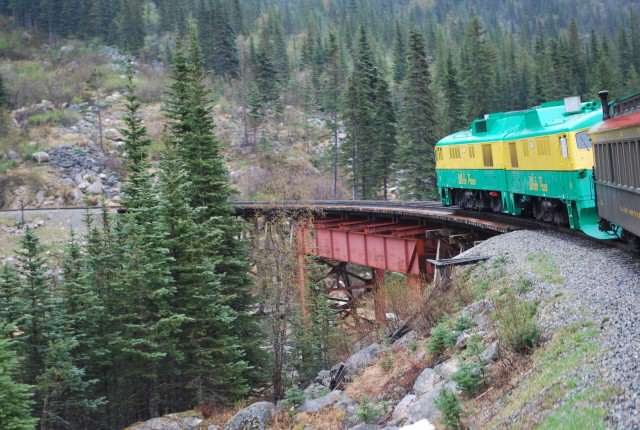 Most passengers ride the train across the Canadian border to Fraiser or Bennett. In 2006, the line was certified to Carcross on the banks of the Yukon River and there are excursions with one way by motor coach now offered through some cruise lines. There are various options depending upon what your cruise lines schedules. Some journeys include one way by motor coach, which affords an opportunity to see the railway line from the highway and to watch the train on its route.
Most passengers ride the train across the Canadian border to Fraiser or Bennett. In 2006, the line was certified to Carcross on the banks of the Yukon River and there are excursions with one way by motor coach now offered through some cruise lines. There are various options depending upon what your cruise lines schedules. Some journeys include one way by motor coach, which affords an opportunity to see the railway line from the highway and to watch the train on its route.
There are various local excursions on the Canadian side of the border such as visiting a dog sled facility that can also be incorporated into the train trip. And some cruise lines offer a round trip that just reaches the summit at the Canadian border and then returns. For some charter services the railroad does use a steam locomotive during the summer months, but diesel locomotives are used on most trains.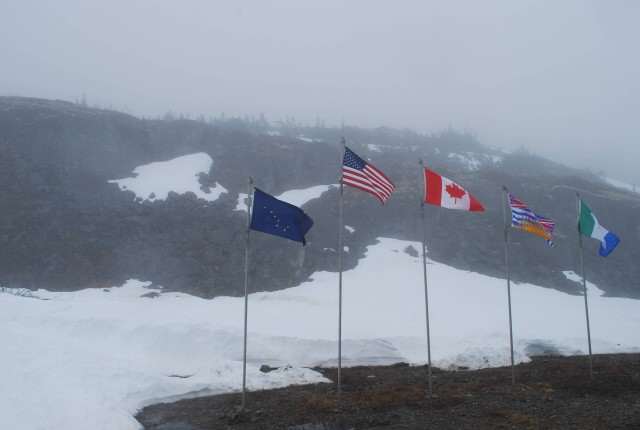 For those who spend the day in Skagway and those taking the shorter rail journey, there is plenty of time to walk around the town and enjoy the 100 old Victorian buildings that date back to the days of the Klondike Gold Rush. And Skagway residents have provided a variety of entertainments in the local pubs and restaurants as well as the shops with many dressed in traditional 19th century garb. Here are a few of the venues in and around Skagway that can help keep you busy and entertained:
For those who spend the day in Skagway and those taking the shorter rail journey, there is plenty of time to walk around the town and enjoy the 100 old Victorian buildings that date back to the days of the Klondike Gold Rush. And Skagway residents have provided a variety of entertainments in the local pubs and restaurants as well as the shops with many dressed in traditional 19th century garb. Here are a few of the venues in and around Skagway that can help keep you busy and entertained:
- Red Onion Saloon Brothel Museum – A colorful part of Skagway kept alive, but only in spirit, as there is no working brothel
- Skagway Museum – A small venue that has many of the artifacts of the past to help bring the gold rush days to life
- State Street and Broadway – Walk the few blocks of the historic district and simply soak in the architectural flavor of old Skagway
- Klondike Gold Rush National Historic Park – Operated by the National Park Service there are hikes, float tours and an excellent visitors center that provides the history of Skagway and the gold rush era
I personally recommend the rail journey because the scenery is spectacular and the train has a very nostalgic flavor.
Submitted by, Dr. Lew Deitch www.doctorlew.com
